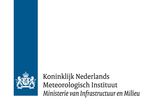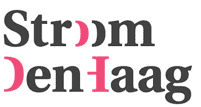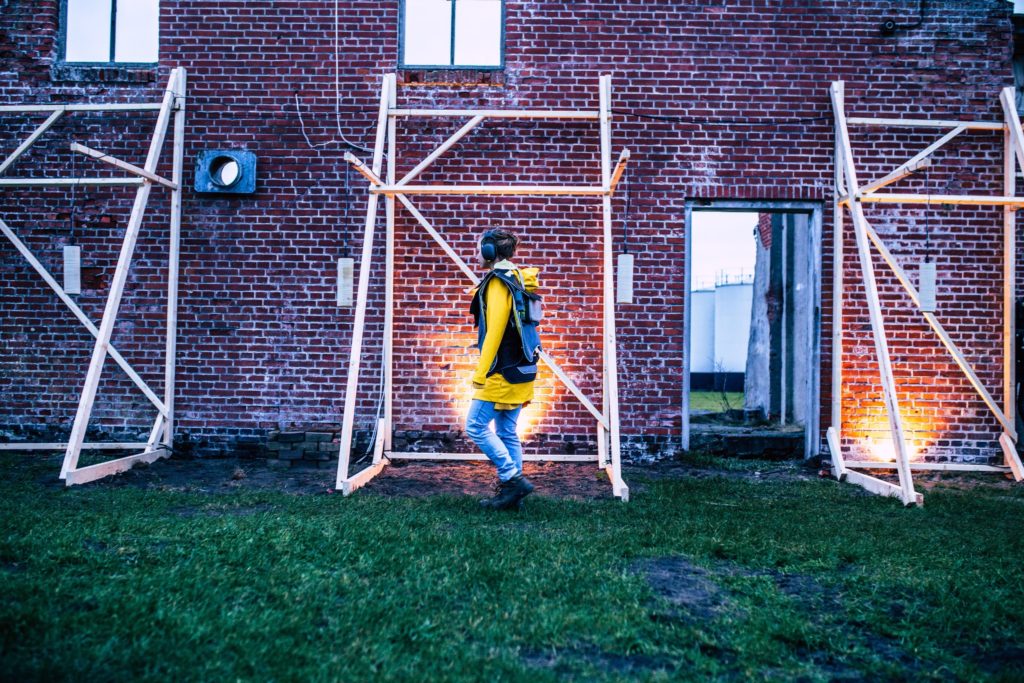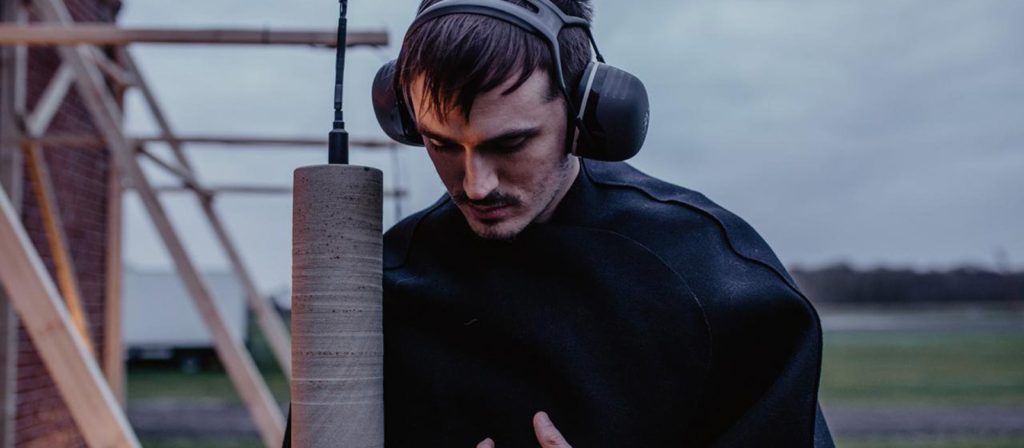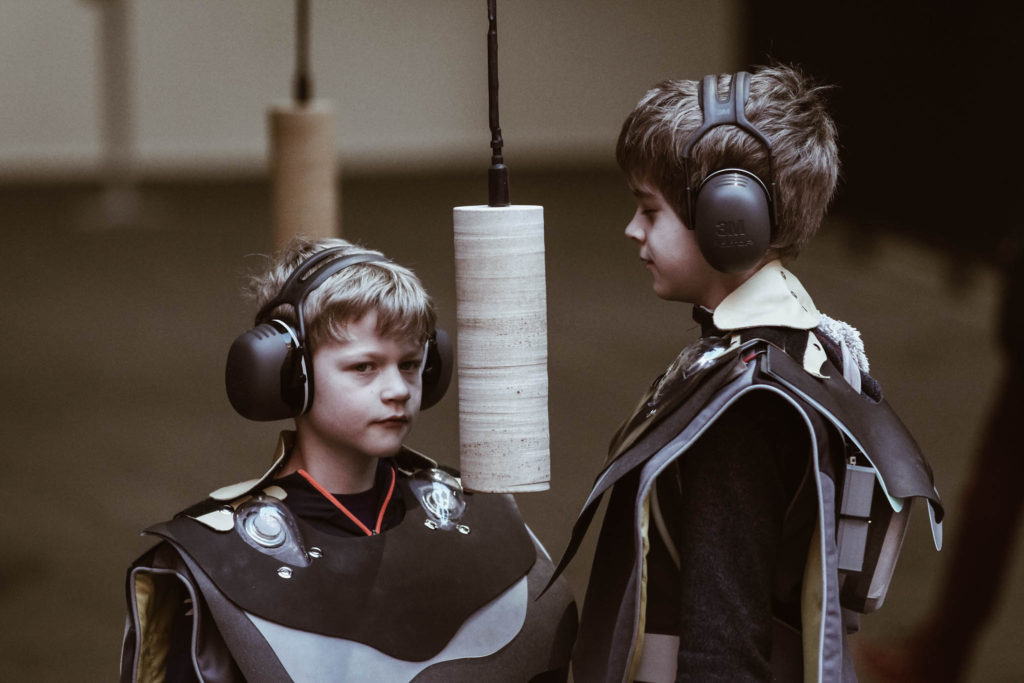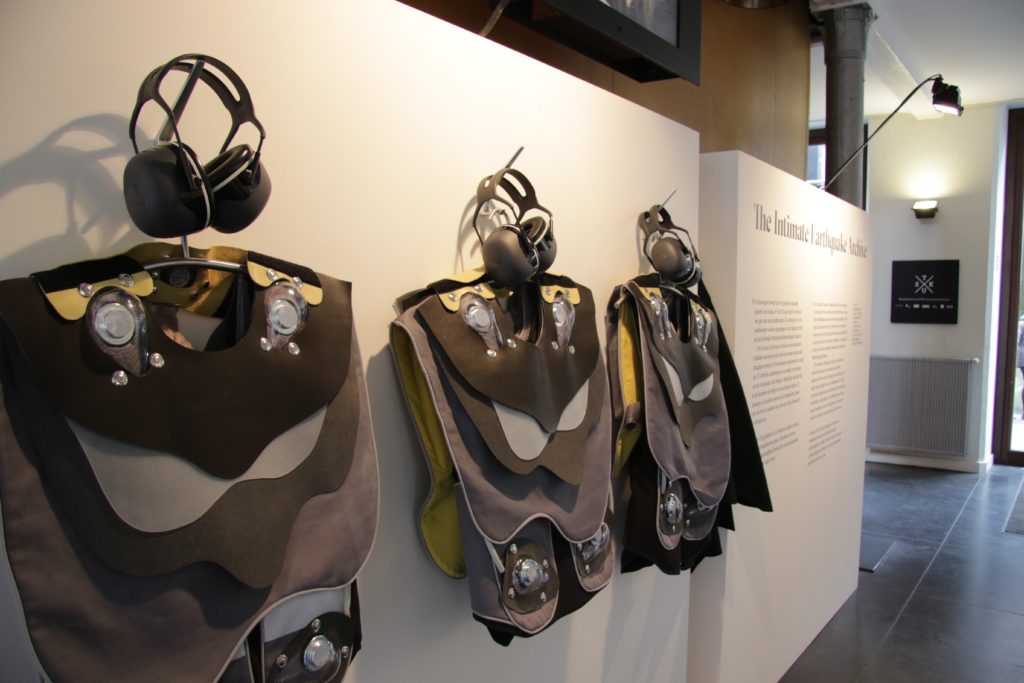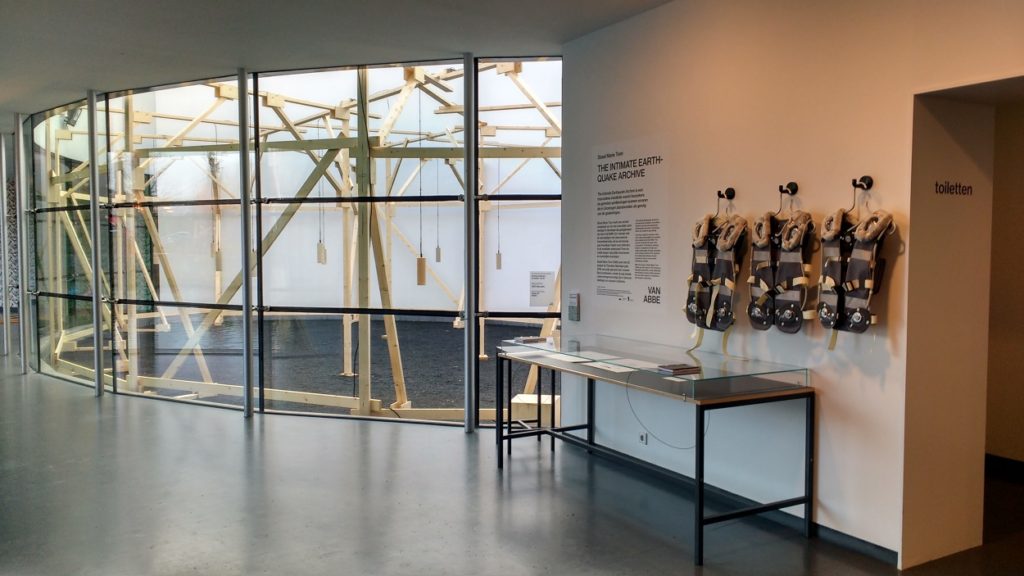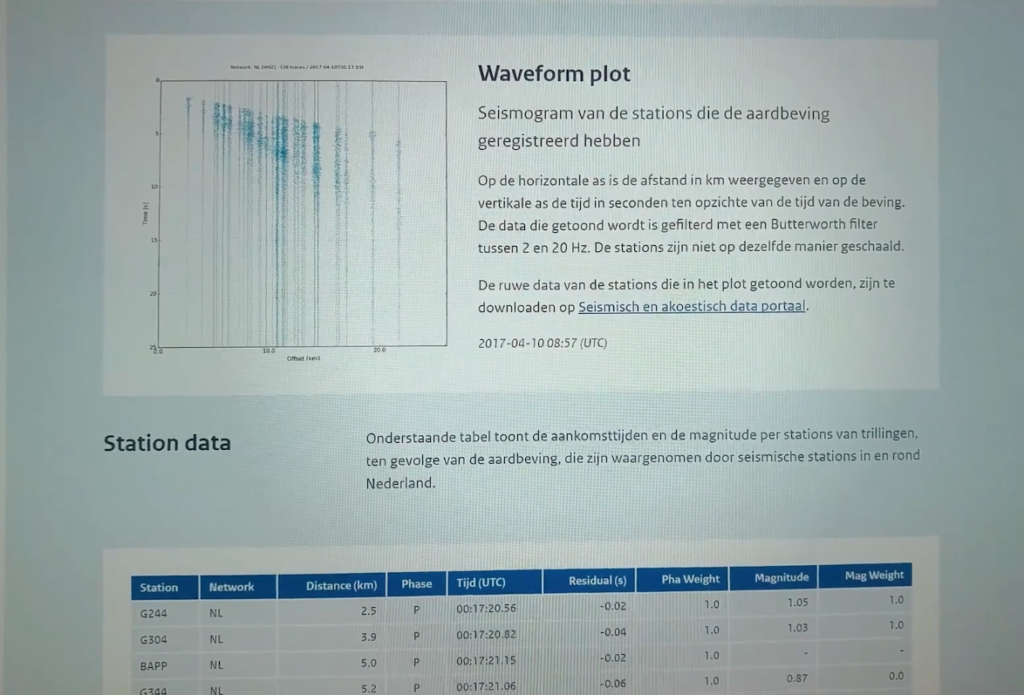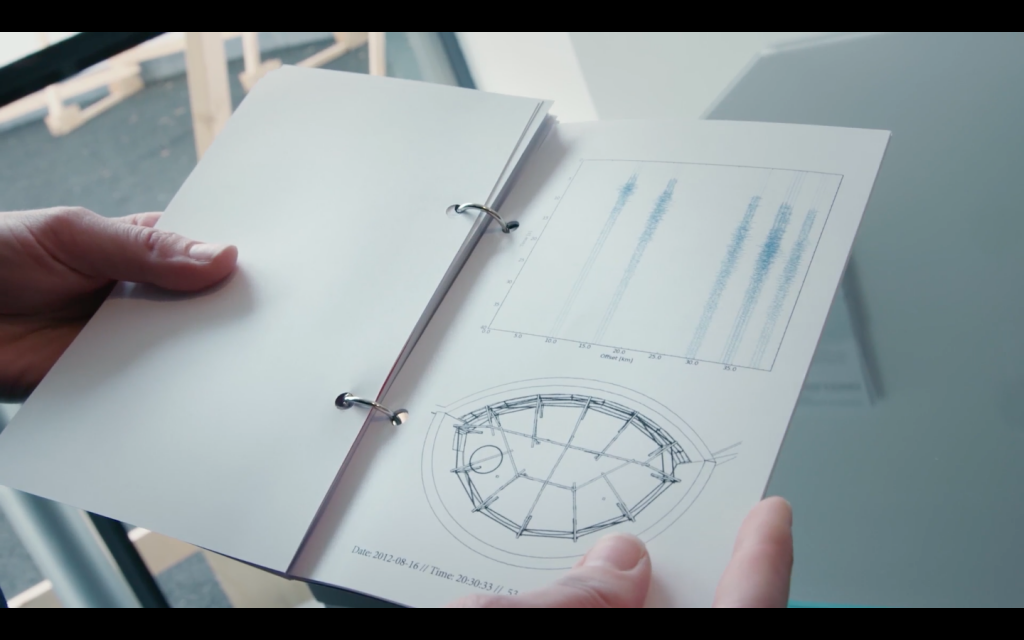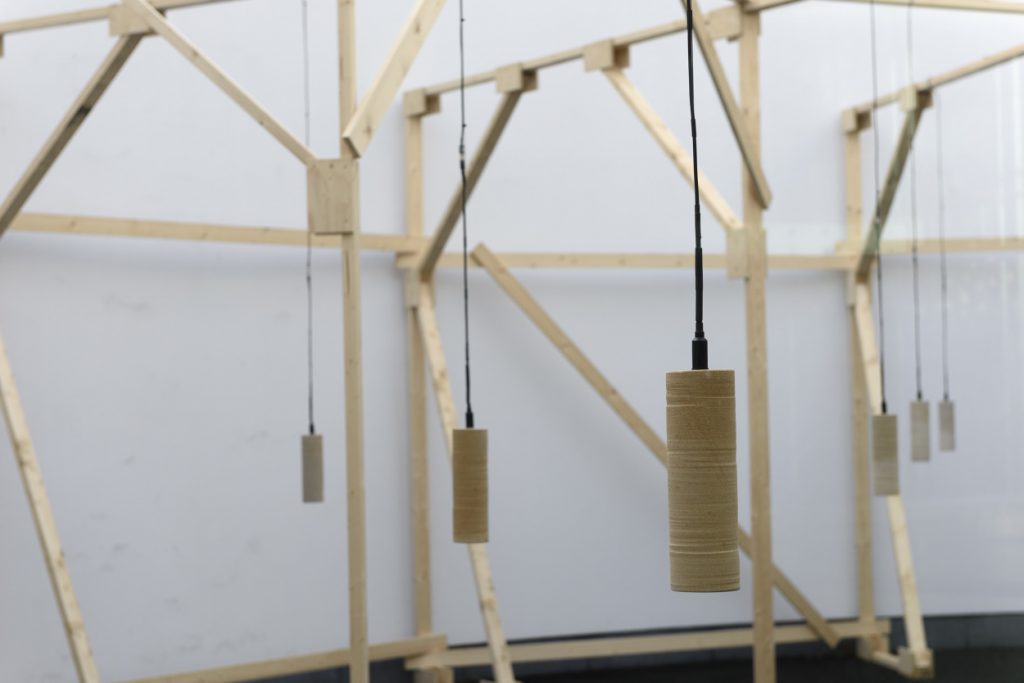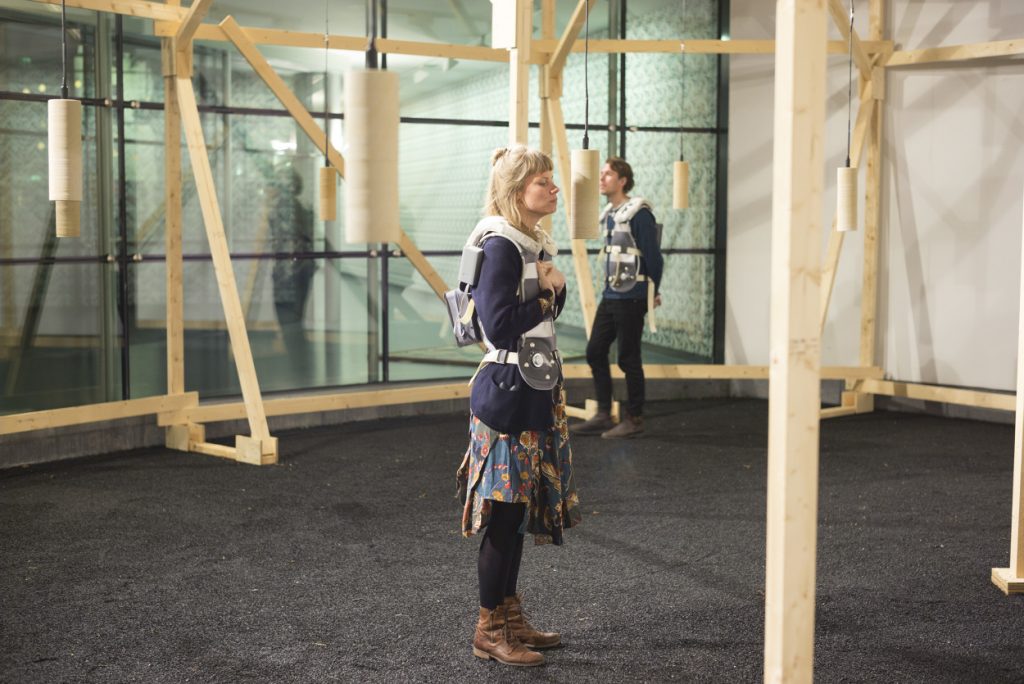The Intimate Earthquake Archive
Collaboration Composition Design Installation Research
interactive wearable artwork, tactile earthquake vests and haptic compositions derived from the seismic archive of the Groningen gas fields. Interactive radio broadcast system. Sandstone earth core samples, wooden scaffolding and written text.
Read more about The Intimate Earthquake Archive on We Make Money Not Art, on the Bela Blog., and in an interview with Ars Electronica in 2020.
Year
2020 (iteration 3), 2018 (iteration 2), 2016 (iteration 1)
Concept and Research: Sissel Marie Tonn
Composition and Data Sonification: Jonathan Reus
Interactive system and software/hardware development by Marije Baalman, Carsten Tonn-Petersen and Jonathan Reus
Wearable design for iteration 3 in collaboration with Das Leben Am Haverkamp
Supported By
For the last 32 years the north of The Netherlands has experienced man-made earthquakes due to gas extraction in the largest field for natural gas in Europe, the Groningen Gas Field. The work The Intimate Earthquake Archive, brings together research done by artist Sissel Marie Tonn with two different modes of ‘storing’ information of man-made earthquakes: The seismic activity of the earthquakes as meticulously recorded and annotated in the immense digital data bank of the Dutch Meteorological Institute (KNMI); and the personal stories of people living in Groningen, who can provide precise descriptions of feeling this seismic activity passing through their bodies to anyone willing to listen. Some of the people living with these man-made earthquakes even claim to wake up in their beds, before they feel the tremors across the earth.
Together with collaborating artist Jonathan Reus, Tonn developed the The Intimate Earthquake Archive as a gesture overlaying the digital siesmic archive of the KNMI, marked by its scientific and highly specific modes of collection with a tactile archive, one which can only be accessed through the sensing body of the visitor through a specially designed wearable interface with embedded surface (skin) and bone conduction transducers. The artists have carefully chosen 12 earthquakes of cultural and political significance to be part of this sensory archive, and have worked to transform these data sets into vibratory compositions that move across the body and at the subsurface of the skeleton.
Each of the vests contains a bespoke radio receiver circuit and custom made embedded antenna which receives signals from each of the beacons, while an embedded computer in the vest calculations approximate proximity of the wearer within the radio network. The vests are configured with vibrotactile actuators that press against the body of the wearer at specific skeletal structures, such as the collar bone, hip bones and spinal potrusions on the neck, communicating earthquake vibrations through the skin and bone of the audience. Each vest uses a Bela embedded computer plus custom circuitry, with software written in C++ and Supercollider.
Visitors choose which earthquake compositions they want to experience by positioning themselves within a network of long-wave radio transmitting core samples, where proximity to the samples increases the intensity of experiencing that entry. The vibrations move across the skin similarly to how the earthquakes moved across the land, and are intended to inspire a ‘deep listening’ experience within the body.
This gesture is instigated from questions of how anthropocentric geological changes might be recorded, experienced and how they enter into history.
Iteration 3 (2020)
Iteration 2 (2018)
